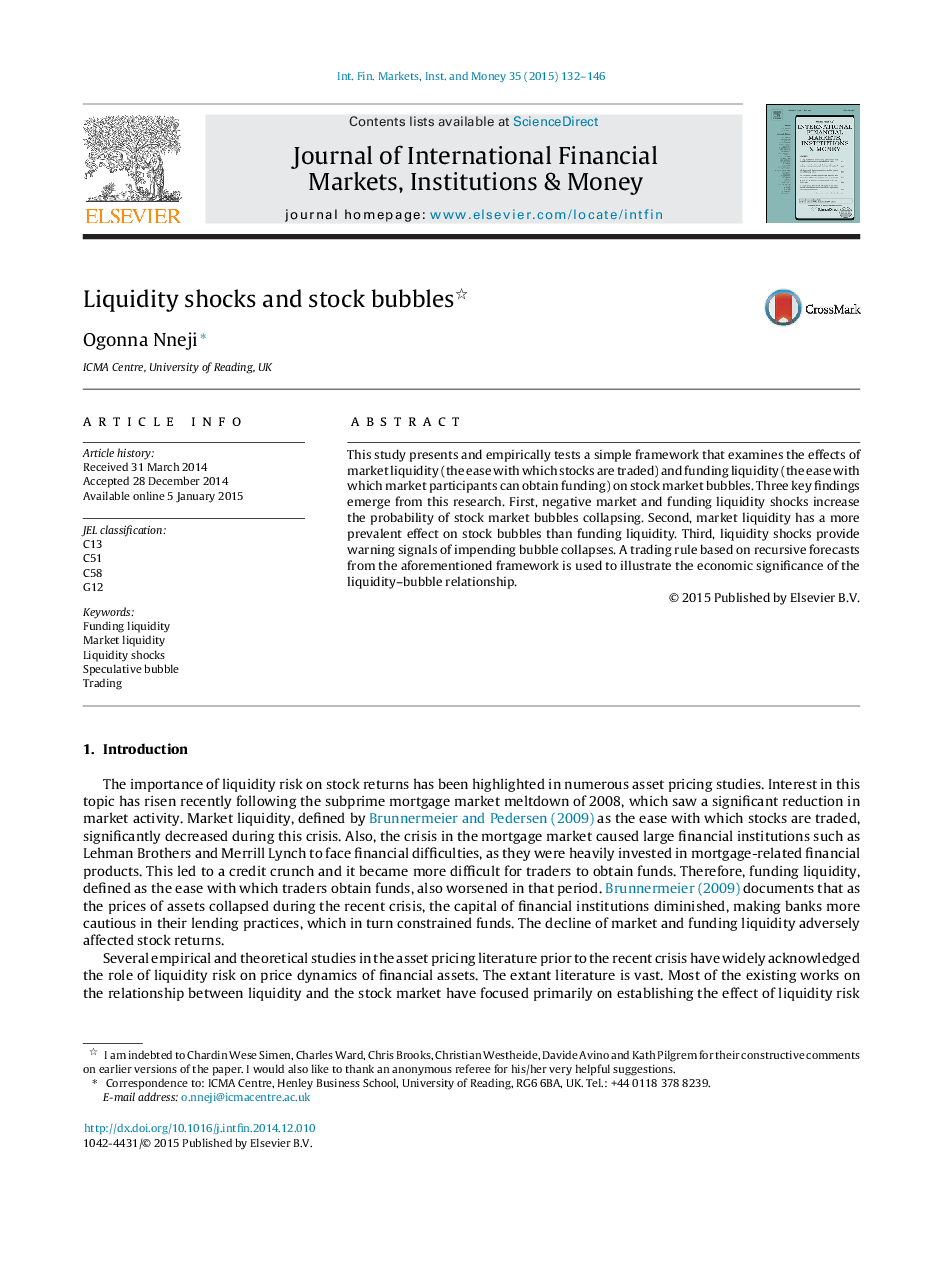| Article ID | Journal | Published Year | Pages | File Type |
|---|---|---|---|---|
| 963982 | Journal of International Financial Markets, Institutions and Money | 2015 | 15 Pages |
•The relationship between liquidity shocks and speculative bubbles in the stock market.•This is done using a robust regime switching approach.•Negative funding and market liquidity shocks increase the probability of stock bubbles collapsing.•The effect of market liquidity shocks is stronger than that of funding liquidity shocks on stock bubbles.•Trading rules generated from recursively forecasts of the model illustrate the economic significance of the liquidity–bubble relationship.
This study presents and empirically tests a simple framework that examines the effects of market liquidity (the ease with which stocks are traded) and funding liquidity (the ease with which market participants can obtain funding) on stock market bubbles. Three key findings emerge from this research. First, negative market and funding liquidity shocks increase the probability of stock market bubbles collapsing. Second, market liquidity has a more prevalent effect on stock bubbles than funding liquidity. Third, liquidity shocks provide warning signals of impending bubble collapses. A trading rule based on recursive forecasts from the aforementioned framework is used to illustrate the economic significance of the liquidity–bubble relationship.
